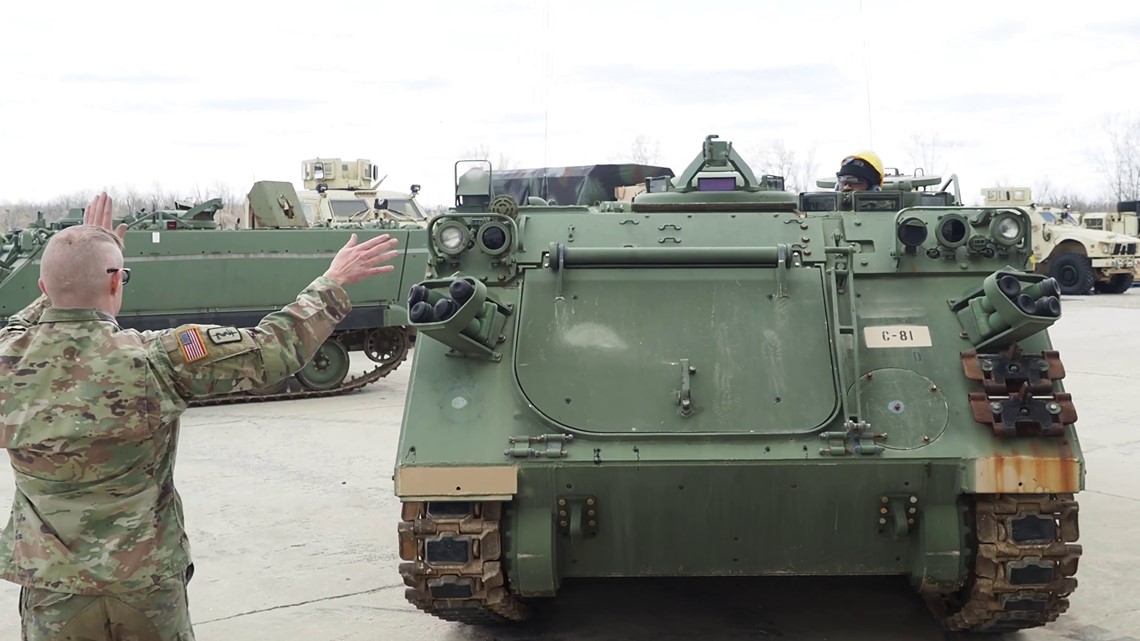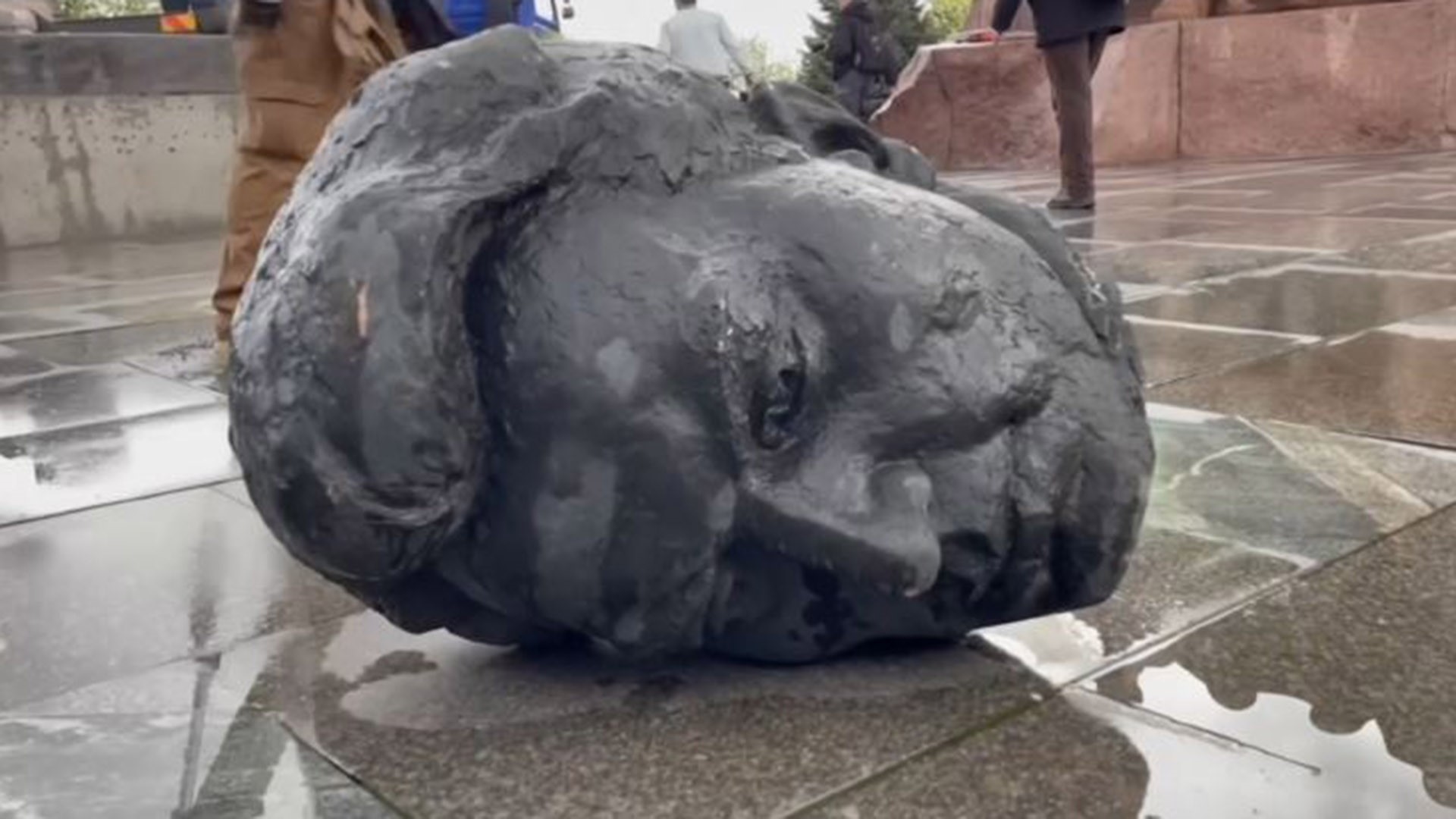JEFFERSON CITY, Mo. — The Missouri National Guard is sending armored military vehicles to Ukraine to aid its defense against Russia's invasion.
Lt. Col. Lindsey Decker, director of public affairs for the Missouri National Guard, confirmed in a statement to 5 On Your Side that an undisclosed number of M-113 Armored Personnel Carriers (APC) would be sent to Ukraine "as part of a drawdown of DoD inventories to provide immediate military assistance to Ukraine."
On April 21, the Department of Defense announced the authorization of a Presidential Drawdown of security assistance to Ukraine valued at up to $800 million as Russian forces launch a renewed offensive in Eastern Ukraine. It's the eighth drawdown of equipment of DoD inventories from Ukraine since August 2021.
The equipment will come from the 35th Engineer Brigade and will be transported out of Missouri after a technical inspection.
"M-113 APCs are used to move Soldiers and equipment across the battlefield while providing protection from small arms fire and the effects of artillery," the Missouri National Guard statement said.


The Missouri National Guard couldn't provide details such as equipment numbers or a timeline due to "the sensitive nature of this mission," Decker said.
As of April 22, United States security assistance committed to Ukraine includes:
- Over 1,400 Stinger anti-aircraft systems;
- Over 5,500 Javelin anti-armor systems;
- Over 14,000 other anti-armor systems;
- Over 700 Switchblade Tactical Unmanned Aerial Systems;
- 90 155mm Howitzers and 183,000 155mm artillery rounds;
- 72 Tactical Vehicles to tow 155mm Howitzers;
- 16 Mi-17 helicopters;
- Hundreds of Armored High Mobility Multipurpose Wheeled Vehicles;
- 200 M113 Armored Personnel Carriers;
- Over 7,000 small arms;
- Over 50,000,000 rounds of ammunition;
- 75,000 sets of body armor and helmets;
- 121 Phoenix Ghost Tactical Unmanned Aerial Systems;
- Laser-guided rocket systems;
- Puma Unmanned Aerial Systems;
- Unmanned Coastal Defense Vessels;
- 14 counter-artillery radars;
- Four counter-mortar radars;
- Two air surveillance radars;
- M18A1 Claymore anti-personnel munitions;
- C-4 explosives and demolition equipment for obstacle clearing;
- Tactical secure communications systems;
- Night vision devices, thermal imagery systems, optics, and laser rangefinders;
- Commercial satellite imagery services;
- Explosive ordnance disposal protective gear;
- Chemical, Biological, Radiological, Nuclear protective equipment;
- Medical supplies to include first aid kits.
For a full breakdown of U.S. security assistance provided for Ukraine, visit the DoD's Fact Sheet.
Russia’s offensive in eastern Ukraine gathered momentum Thursday as the United Nations' chief surveyed the destruction in towns outside Kyiv that experienced some of the worst horrors of the first onslaught of the war.
U.N. Secretary-General António Guterres condemned the atrocities on towns like Bucha where evidence of mass killings of civilians was found after Russia’s retreat from the area in the face of stiffer-than-expected Ukrainian resistance.
The revelation of mass killings around Kyiv helped to galvanize support for Ukraine in the West, which has slapped sanctions on Russia and sent arms to Ukraine. Bulgarian Prime Minister Kiril Petkov vowed his country would join others in providing military assistance as he toured another scene of atrocities outside Kyiv, Borodyanka.
The visit by the Bulgarian leader comes a day after Russia suddenly cut off natural gas to his country and fellow NATO member Poland, in what was seen as a bid to punish and divide the West over its support for Ukraine ahead of the potentially pivotal battle in the eastern industrial region of the Donbas.

